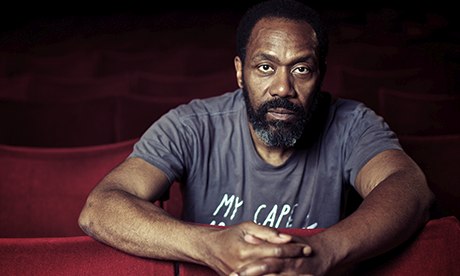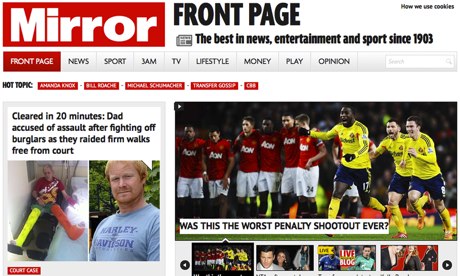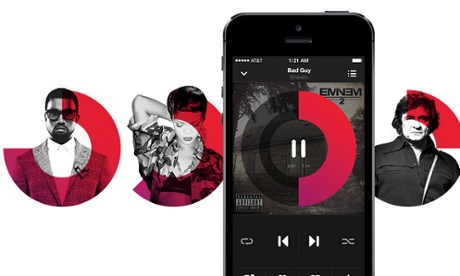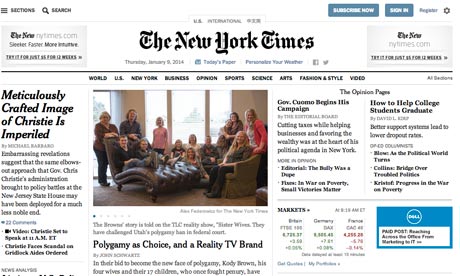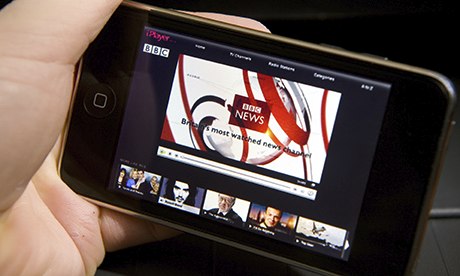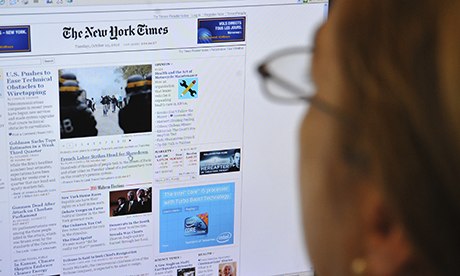L4
42/48
A-
WWW: Fluent, well argued and backed up with examples
Feedback: You need to provide specific theorists and reference quotes. Also, add a few lines to each of the sentences highlighted so there is more detail.
Question: The development of new and digital media means the audience is more powerful in terms of consumption and production. Discuss the arguments for and against this view.
Changes made in red
Audiences are said to have more power in some ways however others believe that this statement is not true due to how the rich stay rich and the powerful stay powerful. The concepts of Marxism and Pluralism associate with power for audiences in terms of the consumption and production of new and digital media. In terms of Marxism, audiences are said to be force fed information and facts; believing what the rich and powerful say due to how the media portrays them as role models. The other side to Marxism (the opposite of this theory) is known as Pluralism which is the belief that people/audiences have power and do control the media. This essay will explore these concepts in correlation to new and digital media through the use of key media terms, quotes from authorities figures and media theorists that link towards the overall question.
Firstly the development of new and digital media allows pluralists to argue that audiences are empowered due to consumption and production of media. They believe that audiences/viewers are in control of what media organisations show and air because the media organisations want to give people what they want in order to ensure that they are getting money. It’s based around the money as they only give audiences what they want as that’s the only way that they can ensure they get what they want. Furthermore the uses and gratifications theory by Blumler and Katz relates to Pluralist ideologies due to the fact that it argues that media companies give audiences a number of reasons to view content such as diversion (otherwise known as escapism) or socialism. Also audiences are gaining the information that they want to know about as media companies accommodate to what the audience want. As this is the case Pluralists believe that audiences control what media organisations show them and therefore believe that audiences are in fact empowered. “Technological blossoming of the culture of freedom, individual innovation and entrepreneurialism” Castells, 1996. This statement connotes the fact that technology is becoming more advanced and more available and Castells therefore believes that this is allowing ‘freedom of speech’.
Another factor which gives audiences more power than they once had is the through web 2.0. Web 2.0 allows audiences to become producers of media texts instead of just being consumers of media. It allows anyone with a web connection to produce, publish and share their work easily without being a professional. This means that there is no need for professionals or even gatekeepers as it allows equal opportunities for anyone including smaller media producers who want to be heard. Briggs and Burke described the internet as “…The most important medium of the twentieth century” which is a Pluralist point of view based on the internet due to the amount of user generated content (UGC) available to everyone. An example of user generated content is like YouTube as anyone is able to create and post videos on here as long as you have a Google account. Furthermore viewers are able to like, comment and subscribe to videos and YouTube channels. UGC websites such as YouTube create opportunities for people to get their ideas out there in the world. An example of someone who got famous due to YouTube is Justin Bieber. He started his career by singing his songs on YouTube and is now one of the most famous young artists in the world. User generated content does help create opportunities for people to get heard and does equal the playing field.
Citizen journalism is a big factor of user generated content as it is the idea that anyone is able to record and post articles on the web where people are able to read their stories and beliefs without being a media professional. An important piece of citizen journalism is the Rodney King incident which was recorded by a passer-by on a camera phone. This was revolutionary as it was a gateway to people being able to record anything and use it as evidence.
A Marxist perspective in terms of audience empowerment within new and digital media would be that the mass media conglomerates control all of its consumers through forcing their own ideologies which become hegemonic views and opinions. Pareto's law agrees with this statement “a minority of (media) producers always serve a majority of consumers”. This statement means that the 5 big media companies; who own majority of organisations; get their message across to majority of the population as most of the things people consume come from the same ideological foundation company such as News Corp. News Corp is a huge media conglomerate owned by Rupert Murdoch, one of the most substantially rich media businessmen in the world. A Marxist perspective would be that the ‘information revolution’ has done little to nothing in terms of benefits to society as its allowed piracy and copyright. However, the perspective is different to this and subverts the Marxist perspective in order to make audiences think more.
Marxists believe that big companies such as News Corp; who own most organisations; just push their ideologies onto people/consumers and they don’t give audiences power. In fact they believe that the rich media companies allow audiences to believe that they are getting what they want and do have the control and power but they are just led to believe that when it’s not even true. “…it could be argued that the media merely offers the idea that audiences can have their say, while, in practice, the ways in which user-generated content is expressed and understood is barely different from traditional media”. This statement argues that the media exaggerates the point about audiences have great power and control when in fact when the time comes for them to do or say something, nothing happens. The quote is saying that new and digital media is the same as traditional media in terms of audience empowerment but people cannot see this. It’s therefore instigated the ‘dumbing down’ of the media so anyone can grasp the very basic concepts regardless of ability or expertise. The 'dumbing down' of media are in television however audiences are unaware of this. Often it has been noted that audiences do subliminally know this however they like being spoke to and referenced to in an 'easier' and 'dumbed down' way. Examples of the 'dumbing down' of media are like the news articles in newspapers, websites and even television programmes.
Touching once more upon uses and gratifications by Blumler and Katz, the theory is also about audiences and how people use what they see on television or read on the internet; via a media organisations webpage; as a way of making and talking to friends. It allows interaction. An example of this is that if there is a popular show on television people seems to talk amongst themselves about it over the next few day and even weeks. It’s therefore accepted that if you are not part of the people who watch this you feel as if society ignores you and the only way to socialise is to watch this too. This can be a Marxist point of view based on the uses and gratifications theory because the audience don’t seem to control this. Marxists believe that audiences are being led to believe they have the power to control the media however they are just subliminally being brain washed into watching it.
This can link in with the theory concept known as the hypodermic needle due to the way the media injects information and forces audiences to believe things which may not possibly be as true as they appear to be. Marxists believe that the gatekeepers controlling most of the organisations (monopolisation) are actually just injecting false information to viewer’s minds in order to keep the rich and powerful in society on top and looked upon as role models.
In conclusion this essay has been based on Marxism and Pluralism in terms of audience empowerment and audiences influences in the media arguing on one side that audiences have power due to them controlling what they want to watch and read however on the other side that audiences are just made to think that have the option to choose when in fact majority of everything comes from one of the top 5 media conglomerates in the world leaving us with one important question, do you believe you have empowered due to the development of new and digital media?
